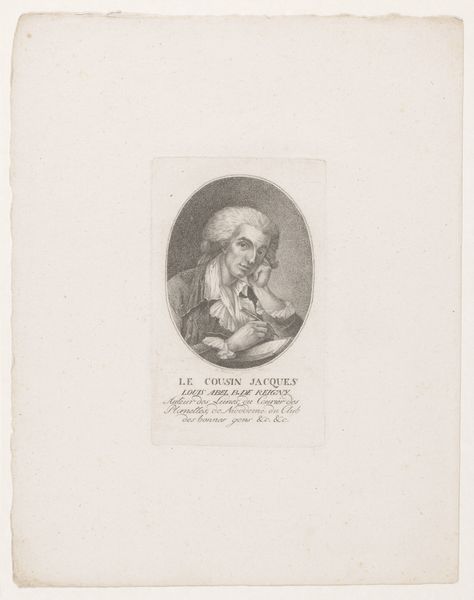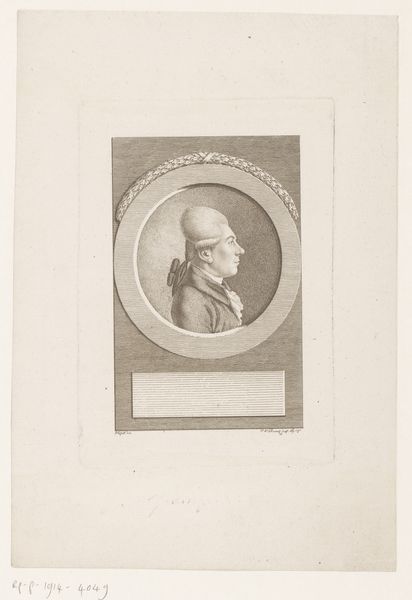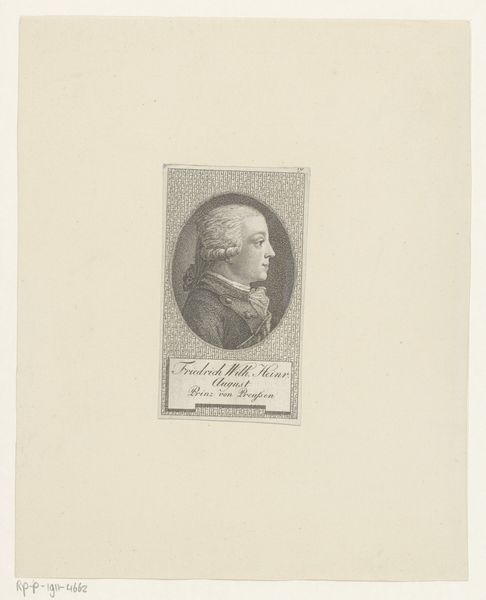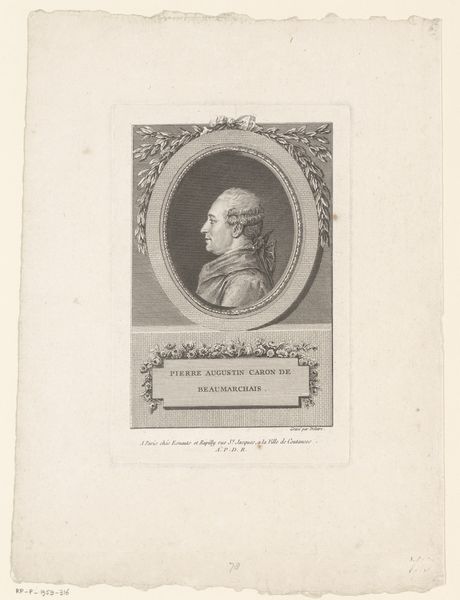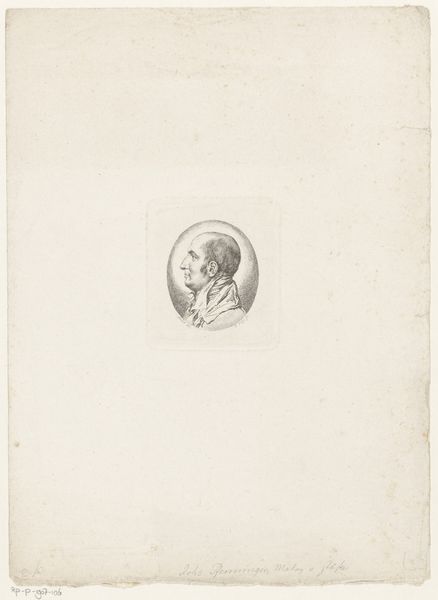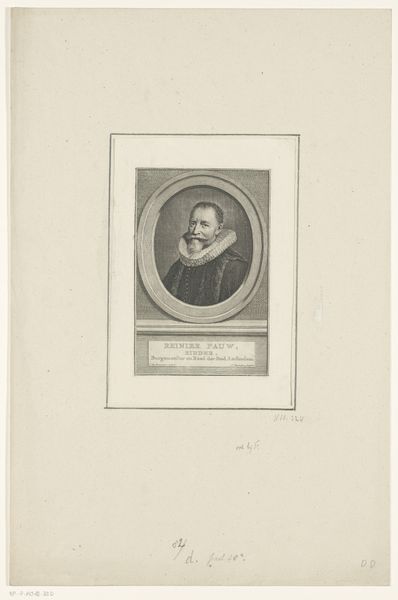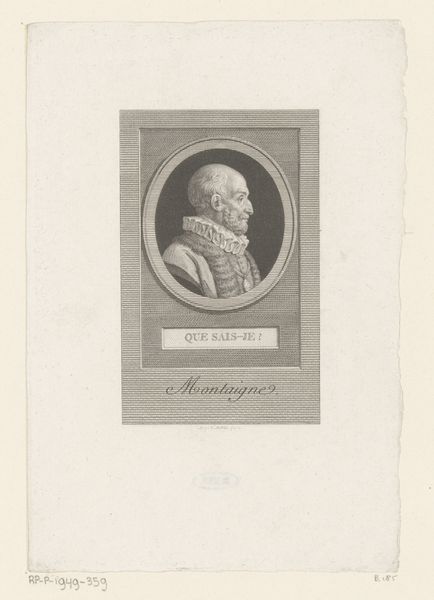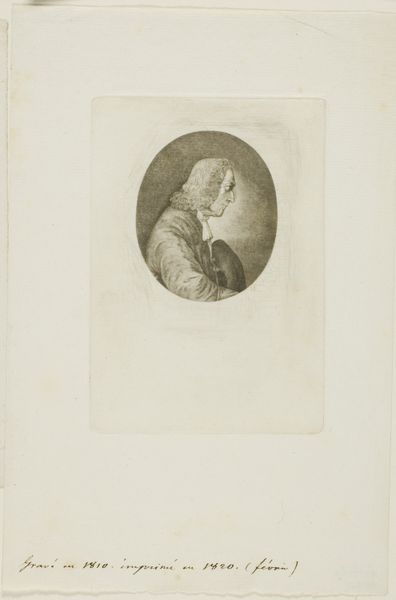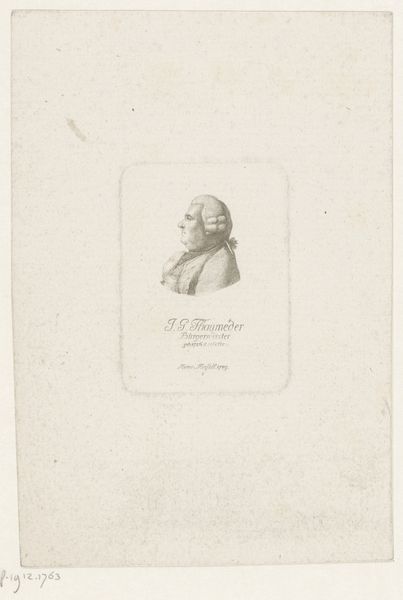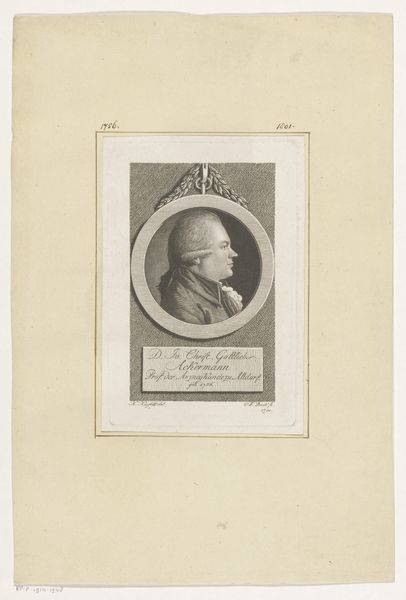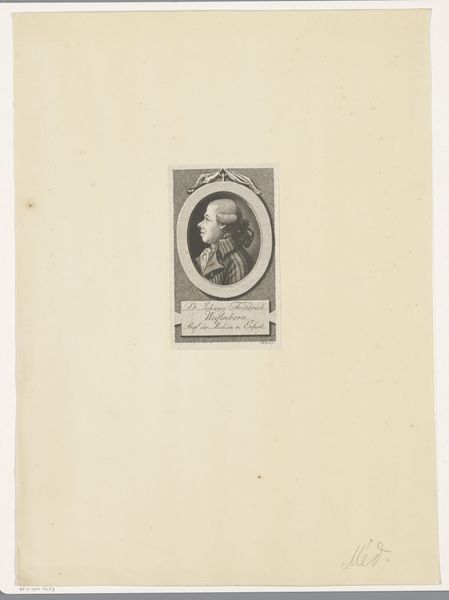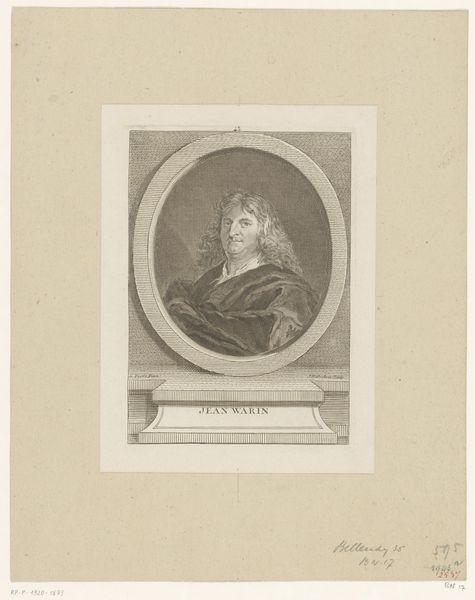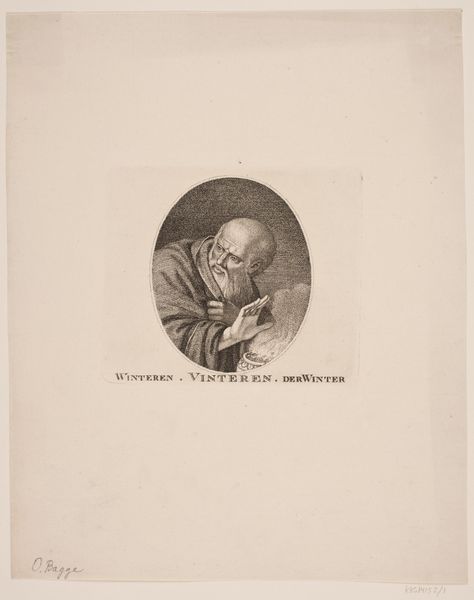
engraving
#
portrait
#
baroque
#
old engraving style
#
academic-art
#
engraving
Dimensions: height 174 mm, width 116 mm
Copyright: Rijks Museum: Open Domain
Editor: This engraving, "Portret van Pieter Adriaensz. Raep" by Jacob Houbraken, created sometime between 1710 and 1780, presents the subject in a rather formal and perhaps even reserved manner, enclosed within a very tight oval frame. The ruff is quite impressive, yet the gaze is piercing. How would you interpret its cultural significance in the 18th century? Curator: Considering the socio-political backdrop, these commissioned portraits served less as simple representations and more as vehicles for projecting status and upholding societal hierarchies. Think about it: Houbraken was known for his engraved portraits often published in series, making them somewhat accessible to a growing middle class seeking to emulate the elite. Does that alter your impression? Editor: It does. So, this wasn’t just about commemorating an individual, but also about the accessibility of portraiture to a wider audience and their aspirations? Curator: Precisely. Engravings like this circulated images and ideals, contributing to a broader visual culture. How do you think the formal style, reminiscent of earlier Baroque portraits, played into this public role? Editor: Perhaps it’s about connecting the sitter to an established lineage, giving them a sense of historical importance that resonates with those aspiring to climb the social ladder? Curator: An astute observation. The very act of commissioning and displaying such a portrait asserted Raep's presence in the social and political landscape of Amsterdam. It highlights the intersection of art and social mobility, a key aspect of the 18th-century public sphere. I wonder, how the portrait engages modern audiences. Editor: I hadn't thought about that interplay between public image and personal ambition before. It gives the piece a whole new dimension! Curator: Indeed. Reflecting on art's role in shaping society's visual and power structures is what continues to make art history so compelling.
Comments
No comments
Be the first to comment and join the conversation on the ultimate creative platform.
